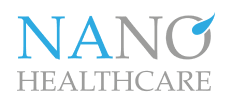Rosacea is more than just a case of “rosy cheeks.” This chronic skin condition can cause various issues, including bumps, inflammations, and even eye problems. People often know little about rosacea and may confuse it with acne or an allergic reaction. In this blog, we discuss the causes, symptoms, and possible treatments for rosacea.
What Is Rosacea?
Rosacea is a chronic condition that primarily appears on the face. The literal meaning is “red as a rose.” Rosacea most commonly occurs in women between the ages of 30 and 50 but is not exclusive to them. But what exactly is rosacea? And how does it differ from other skin conditions like couperose and acne?
Symptoms of Rosacea
The four main features of rosacea are redness, visible blood vessels (couperose), bumps (papules), and pimples (pustules). Additionally, about half of the people with rosacea also experience eye problems. Other common symptoms include a burning or stinging sensation, dryness, and swelling.
How Does Rosacea Differ from Couperose and Acne?
Rosacea and couperose share some symptoms, such as the presence of dilated red blood vessels. However, rosacea usually includes other complaints like bumps and swelling. There are also clear differences between rosacea and acne. For example, blackheads are characteristic of acne but not of rosacea. The dilated blood vessels are typical for rosacea but not for acne.
Causes of Rosacea
The exact cause of rosacea is unknown. It usually develops around the age of 30 and is more common in women and people with fair skin types. External factors such as heat, cold, sunlight, cosmetics, alcohol, spicy food, and certain medications can (temporarily) worsen the symptoms.
What You Can Do Yourself Against Rosacea
Self-care plays an important role in managing rosacea. Below are some effective self-care tips you can apply today:
- Avoid Known Triggers: Heat, cold, wind, hot drinks, intense physical exertion, spicy foods, and alcohol can exacerbate rosacea symptoms. Keeping a diary can help identify your personal triggers.
- Sun Protection: Protect your skin from the sun by using a sunscreen with a high SPF (at least 15) daily. Sunlight is a known trigger for rosacea.
- Gentle Skincare: Choose skincare products and cosmetics specifically designed for sensitive skin to avoid irritation. Avoid harsh scrubs and products containing alcohol.
- Camouflaging Cosmetics: For many, using green-tinted primers or concealers that neutralize redness can help boost confidence.
Professional Treatments for Rosacea
Doctors can prescribe a range of creams containing ingredients like azelaic acid, ivermectin, or antibiotics. There is also medication for severe cases, such as pills containing doxycycline.
OPL for Rosacea
OPL stands for Optimized Pulsed Light. In this therapy, light pulses are emitted and absorbed by the blood vessels. The vessels are essentially heated and broken down, leading to a significant reduction of redness and couperose.
Natural Treatment to Address Rosacea
Have you tried various solutions without success? Consider Nano CellCare therapy. This treatment employs innovative technology that converts natural hyaluronic acid, essential minerals from the Dead Sea, and vitamin C into nanoparticles. These substances are applied to the skin via nebulization, allowing the body to be nourished and restored at the cellular level. The treatment is based solely on natural ingredients.
Nano CellCare Treatment Near You
Discover what Nano CellCare can do for your skin by making an appointment with a certified therapist in your area via our Treatment Locator. If you are under the care of a doctor or specialist, consult them to see if Nano CellCare is a suitable option for you.

